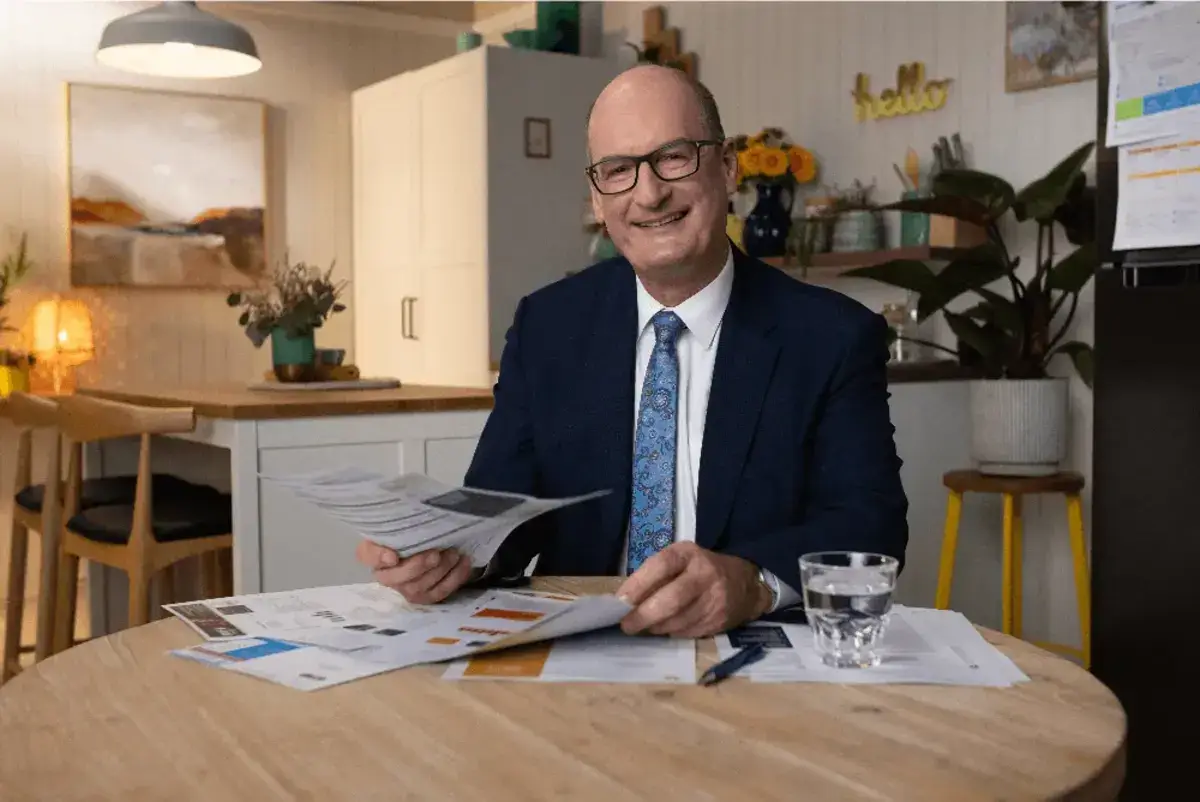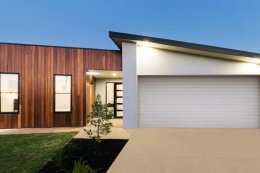
Hi everyone,
Usually, I start with a quick update on the latest economic data and what it means for your money. But I want to kick off this week with a round-up of the most important money issues you need to know about property.
Why? Well, for years I’ve been following Louis Christopher from SQM Research, who I reckon is one of our very best property analysts. Long-time readers will know I often quote him here in the newsletter and share his research.
But this time every year he issues what I think is the best property forecast for the year. It’s called Christopher’s Housing Boom and Bust Report for the next calendar year and has proven to be incredibly accurate over the years.
The 2024 Housing Boom and Bust Report was issued this week and it’s forecasting that Sydney and Melbourne property prices, which have been the star property markets over recent years, will fall next year. Only moderately, but they will fall from their record high levels as interest rates bite.
The base case forecast is for average national dwelling prices to change between a fall of 1 per cent to a 3 per cent rise. Perth and Brisbane are the only cities expected to record price rises, with each respective market driven by the tailwind of a recovering Chinese economy, and the resulting strong demand for base commodities such as iron ore.
In Perth in particular, when the mining industry is booming so is the property market.
But for much of the rest of Australia, the sharp deterioration of housing affordability – driven by ongoing interest rate rises which are now (in SQM’s opinion) at restrictive levels, plus an anticipated slower economy – will see a moderate correction in dwelling prices take place in Sydney, Melbourne, Canberra and Hobart. Adelaide and Darwin are anticipated to remain steady or record a minor rise/correction.
The rise in interest rates over 2022 and 2023, and possibly into 2024, will start to bite both homeowners and would-be home buyers alike. SQM Research expects a rise in distressed selling activity over next year and only the most cashed-up willing to enter the market.
Sydney’s housing market is expected to record a moderate fall in dwelling prices of 4 per cent to 0 per cent. It is expected Sydney’s middle to outer rings for freestanding houses will record a greater correction. Sydney units are expected to outperform, and Sydney’s inner ring is still expected to record price rises as top-end property remains in demand from foreign investors.
2023 has recorded a significant deterioration in housing affordability for Sydney. Typical mortgage repayment to household income ratios have reached generational new highs and, based on the current Sydney median dwelling price ($1.1 million), have put housing out of reach for the majority of Sydney working adults.
Melbourne is also forecasted to enter into a modest correction with prices tipped to fall by up to 3 per cent. Like Sydney, Melbourne’s top end of the market is still expected to record price rises and units are also expected to outperform.
Canberra is forecasted to record the largest falls out of all cities with price falls anticipated of between 4 to 8 per cent. This is due to a combination of slower anticipated federal government spending plus an expected strong rise in dwelling completions (one of the very few cities recording accelerated supply of new homes built).
Louis’ forecasts are based on two important assumptions:
- The rate of net short term and longer-term migration is expected to peak next year and then ease, so total population growth for 2024 falls back to around 460,000 people.
- The rate of inflation is expected to ease back to between 3 – 4 per cent by the end of 2024.
But if Australia’s migration rates don’t slow as anticipated, this would likely mean SQM’s base case forecasts of a mild correction would not materialise. On the other hand, housing price falls could be greater if inflation were to accelerate to the point which forced the Reserve Bank to lift the cash rate beyond 5 per cent.
SQM has built out a scenario based on a second energy crisis, driven by current events in the Middle East. Such a scenario would force the RBA to lift interest rates more aggressively during 2024 and very likely trigger a sharp recession for Australia.
But while property prices could fall in 2024… rents will continue to soar
Rent increases are one of the biggest factors fuelling our inflation rate, keeping it high and forcing the RBA to keep interest rates high.
According to SQM, that pressure on inflation from rising rents is not going away next year.
SQM’s overall capital city forecast is for rents to rise again next year by between 7 and 10 per cent… that’s double the inflation rate.
Perth is expected to record the largest increase of market rents of 12-15 per cent, while Canberra is forecast to record the largest declines of 2-6 per cent. Over the last year combined capital city rents have risen 15.2 per cent and 9.2 per cent in the regions.
The reason is what I’ve been talking about for months: a lack of new properties available for rent. Completed new dwellings for 2023 is expected to be around 175,000 while the population is expected to grow by 575,000 people.
There are simply not enough properties available to house people. Since January 2020, combined capital city market rents have risen by 40.5 per cent – the fastest rise in rents since the 1970s.
SQM’s rental market assumptions for 2024 include population expansion slowing back to 455,000 people, and dwelling completions falling to 153,000. If SQM is right about its assumptions, it will mean a further shortfall of about 20,000 dwellings for next year. SQM does expect tenants to respond with increased sharing (a rise in the number of occupiers per dwelling).
If migration does not slow as expected it is likely rental increases will be greater than forecast. Any better-than-expected building completion rates would help alleviate the shortfall.
The cause of the rental crisis
Everyone talks about the rental crisis, the shockingly high, rapid rise in rents, and how it is fuelling the inflation figure, which is causing interest rates to rise.
Everyone blames so-called “greedy landlords” or governments for failing to build enough public housing.
We all love Airbnb, except if you own a competing hotel or motel. But is Airbnb taking all the rental properties and causing the huge spike in rents for long term tenants?
Airbnb has allowed traditional property investors, who would normally commit to long term rentals, to shift to higher yielding short term tourist rentals.
It’s a free market and property investors are entitled to rent to anyone they like… but is this causing the rental crisis?
Meantime in the here and now… new property records are being set
Turning our attention back to the present, Australian dwelling values have regained the losses from the recent downturn and surpassed their previous peak to reach a new record high, CoreLogic’s national Home Value Index (HVI) shows.
After reaching a peak in April 2022, national home values fell 7.5 per cent, finding a floor on 29 January 2023. Since bottoming out, the national HVI has risen by 8.1 per cent, taking the market to a new record high this week.
According to CoreLogic’s Executive Research Director, Tim Lawless, it took around nine months for the national HVI to move from record highs to the recent trough, then roughly ten months to recover from the short but sharp downturn.
The ‘V’ shaped recovery may seem counter intuitive, given high interest rates, deeply pessimistic levels of consumer sentiment and high cost of living pressures, however the recovery can be explained by an imbalance between supply and demand. In other words, a shortage of stock while there are still plenty of buyers around.
While the national index has reached a new record high, the headline figures hide a growing level of diversity in housing market conditions. Across the capital cities, Perth, Adelaide and Brisbane are all at record highs, with their regional counterparts Regional WA, Regional SA and Regional Queensland also at new peaks.
At the other end of the scale is Hobart, where values remain 11.8 per cent below their peak and Regional Victoria, where dwelling values are 7 per cent below their record highs.
The Reserve Bank Board’s thoughts on inflation
The minutes from the November RBA board meeting which decided to increase interest rates were released this week. They showed the board was rattled by the higher-than-expected September quarter CPI figure.
The minutes noted “higher inflation reflected demand pressures in the economy being stronger than had been expected”. And they’re concerned it’s going to stay stubbornly high because migration is boosting population growth.
So, while households are paying more than ever to service their loan repayments and cutting back spending, the rise in population and 500,000 new consumers is offsetting this.
The minutes noted “the outlook for output growth had been revised up in the near term compared with the previous forecasts. This partly reflected stronger‑than‑expected population growth, which had been revised higher over successive prior quarters, and more strength in private and public investment than had previously been expected.”
As a result “the assessment of the staff was that higher inflation reflected demand pressures in the economy being stronger than had been expected.” Members also noted that “the staff’s inflation forecasts would be for higher inflation if they had not been predicated on one or two rate rises.”
According to CommSec, there has been a recent focus on the public sector infrastructure pipeline and capacity constraints on the investment side of the Australian economy. The International Monetary Fund has also made this point. It will be worth watching upcoming mid‑year Budget updates from both the federal government and the various state governments.
Governments must start doing some of the hard work in fighting inflation and not just leave it up to the Reserve Bank to be the bad boy and do all the heavy lifting. The RBA only has interest rates to fight inflation, but Governments can use a range of fiscal policies, like cutting back spending on things like infrastructure, to help out.
Services inflation continues to be the main area of focus. The minutes noted it would take subdued aggregate demand to resolve inflation, and not just the end of supply chain disruptions. As a result, “it was expected to take longer to return inflation to target than it had taken so far to reduce inflation from its peak.”
Members noted that “the risk of not achieving the Board’s inflation target by the end of 2025 had increased and that it was appropriate that monetary policy should be adjusted to mitigate this.”
And a hike would reduce the “risk of inflation expectations increasing if the Board left the cash rate target unchanged at this meeting, particularly given the Board’s repeated statements that it has a low tolerance for inflation returning to target after 2025.”
The all-important December quarter CPI figure will be released on 31 January. If the result is more than expected then another rate hike in February is a certainty.
But if it shows a marked improvement then the peak of the rate cycle looks to have been reached. Remember, last year’s terrible December quarter CPI will drop out of the annual figure which will help… as will a drop in prices of some key inflation components.
For example, that spike in wages in the September CPI could moderate significantly in the December quarter if the latest enterprise bargaining agreements lodged with the Fair Work Commission are any indication.
Speaking of key inflation costs… what the hell is happening with our energy costs?
Rents, insurance and energy costs have been key inflation drivers. So when I came across a table from the OECD this week, I couldn’t help but mutter “What the hell is going on here?”
Australia is one of the biggest energy producers and exporters in the world, so we should be amongst the first to benefit from falls in energy prices.
Energy prices have dropped in most of our trading partners, bringing down inflation and easing pressure on interest rates. But not in Australia… why not?
UK, US, Europe, Japan… all down. Australia up 9 per cent in September.
Is it because of gouging from energy retailers? Or our poor energy infrastructure? Or bad government policy?
What exactly is an economic recession?
Everyone is talking about a possible economic recession in Australia next year. This week, in my role as Economic Director for Compare The Market I wrote this explainer for Yahoo Finance on what a recession actually is.
What is an economic recession?
A recession is a period of sustained economic decline.
There are different definitions around the world but here in Australia most economists will count two consecutive quarters of negative economic growth as a technical recession. In reality it’s a time when average Australians are finding it hard to balance the household budget, they’re losing their jobs, businesses are going bust.
You don’t wish an economic recession on anyone. Not only does it cause financial hardship, it can also put enormous strain on relationships as they cope with financial stress.
There are a number of issues that can trigger a recession but usually it’s a cocktail of compounding elements that shift the dial.
Risk factors include high interest rates, asset bubbles (like inflated property and share values), too much inflation, financial crises, and “black swan” events that no-one sees coming (like the pandemic) that create economic volatility.
What are people most concerned about?
One of the typical fears is a rise in unemployment. Lose your job and your income is cut off. People go into the bunker and cut back on spending, business bottom lines then suffer, and some employers sadly resort to job cuts.
Compare the Market surveyed over 1,000 Australians in July and found that 16 per cent were concerned about the impact a recession would have on their job security.
When was the last recession in Australia?
We’re so lucky to live in this country for a whole range of reasons, including the fact there’s a whole generation of Australians who have never lived through a major recession.
Australia did have a technical recession during the pandemic in 2020… that one was impossible to dodge.
But the last major recession ran from 1990 to 1991 when inflation was red-hot and interest rates were at a record high. Can you imagine paying off a mortgage today with the cash rate at 17.5 per cent?
It was bloody hard. And the worst part? A lot of people lost their jobs. Unemployment soared to 11 per cent… that’s one in 10 Aussies out of work; it was horrible.
Paul Keating was Federal Treasurer and he said it was “the recession we had to have”. We had a boom-bust economy at the time which was inefficient compared with our trading partners. That’s when Keating introduced a national savings scheme (the compulsory superannuation we have today) and reduced tariffs to make business more efficient and globally competitive.
Those reforms of the last recession are the major reason we haven’t had one since.
What are the warning signs of a recession?
Recessions can be hard to predict as risk factors are fickle.
Warning signs can include falls in consumer spending, business confidence, property prices and a spike in mortgage defaults and business insolvencies.
The pricing of Government bonds can also provide an indicator. Everyone thinks Government bonds are boring, but they can be a critical crystal ball into the future of the economy.
In normal investing the longer you lock your money away for, the higher the return you should earn for making that commitment. Makes sense; it’s called a “yield curve”. You earn less interest on short term savings and higher interest on longer term savings.
An “inverted yield curve” is the reverse. It happens when investors think interest rates will fall in the long-term because the economy will be weak and a cut in interest rates will be needed to stimulate it.
How long do recessions last?
Recessions can last anywhere between six months to a few years depending on their root cause and how they are managed. It basically depends on what the Federal Government and Reserve Bank do to stimulate or change the economy.
Longer recessions may be considered ‘depressions’. The last time Australia had one of those was in the early 1930s, when unemployment was thought to be around 20 per cent following the 1929 Wall Street crash.
And of course, even when economies bounce back, certain side-effects linger. Job loss and financial stress can be absolutely devastating for families.
People who are out of work for protracted periods may face skills gaps as processes and technology advances. Then there’s the impact on mental health.
Can recessions be prevented?
In some cases, yes. And we’ve seen Australia dodge them in past (we made it out of the Global Financial Crisis, and before that the Asian Financial Crisis, without a bust).
But it really depends on the root causes.
The Reserve Bank of Australia has been hiking rates to cool inflation, but it’s wary that a heavy hand could knock us into recession.
Their goal is to achieve a “soft landing” for the economy – that means putting the brakes on consumer spending, gently, to slow growth, to bring inflation down without a major downturn.
That might mean Aussies need to tighten their belt a bit more.
But some compounding factors are beyond their control.
Could Australia be headed for a recession now?
There are some concerns that the RBA’s latest rate rise may have been a step too far.
We know that more mature households – those that have been building savings buffers for years – are probably well equipped to manage the rise in costs and mortgage repayments.
But then there are many new homeowners who have had to buy at higher prices and now have to manage higher rates.
Compare the Market figures show Australians with a $600,000 variable mortgage could be paying $1,552 more each month than they were at the start of May 2022, due to the 4.25 per cent cash rate crunch.
The household saving-to-income ratio fell to 3.2 per cent in the June quarter… its lowest level since 2008.
We really are at an economic tipping point. Inflation is staying stubbornly high and an increasing number of companies are laying off staff.
But property prices are still rising (which makes us feel rich) and our record migration numbers are boosting retail sales. Without those 500,000 new customers (migrants) Australia would be in a recession right now.
At this time, I think Australia will avoid an economic recession… but only just. The December quarter CPI figures should show a marked improvement on the September quarter, which should allow the RBA to stop anymore rate hikes and even look at cutting rates if the economy tips over into recession.







